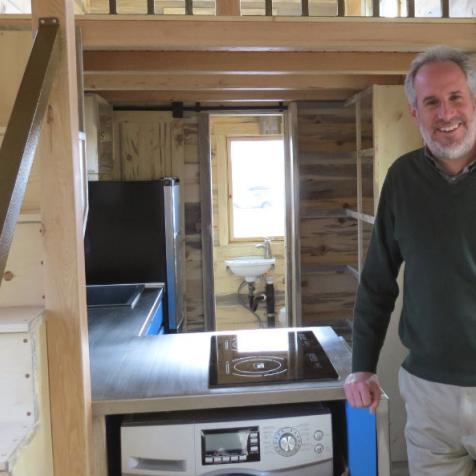
Tumbleweed Tiny House Company
By Margaret Jackson | Feb 14, 2017
Company Details
Location
Colorado Springs, Colorado
Founded
2007
Ownership Type
Private
Employees
80
Products
Tiny houses and trailers
Colorado Springs
Founded: 2007
Privately owned
Employees: 80
Industry: Built Environment
Products: Tiny houses and trailers
CEO Steve Weissmann is taking tiny houses into the mainstream, and he sees a bright future for both the concept and his company.
In 2006, Weissmann was living in a 400-square-foot house when he learned about a guy who was living in an even smaller dwelling. Intrigued, he started volunteering his time to help create the business that ultimately would become the Tumbleweed Tiny House Company.
It started out as a do-it-yourself company that sold plans for tiny houses. In 2007, Weissmann became a partner and took the helm as president and CEO. By 2013, it had morphed into the largest manufacturer of tiny house RVs in North America.

"Five years ago, it was me and five people working in the back of my garage," says Weissmann. "At that time, it was more of a cult thing than mainstream."
Tumbleweed's houses cost between $60,000 and $100,000, with the average customer spending about $70,000, or $500 a month.
The company now produces about eight houses a month in its 20,000-square-foot factory. The maximum it make in that space is 14 houses. The company is negotiating with its landlord to expand its space so that it can produce as many as 20 houses a month. "After that, we'll max out in that facility," says Weissmann.

While other manufacturers build their tiny houses at a single station, Tumbleweed's houses move from station to station through a production line. It takes about three weeks from start to finish.
In 2016, the company completed a total of 100 houses, and Weissmann expects it will make as many as 150 this year -- maybe even 180 if it is successful in expanding the factory. "We have a five-month backlog," he says. "We're racing to increase capacity."
Challenges: With the company doubling in size about every 18 months, managing its growth is one of the hardest things Weissmann is facing. "It's demanding on both my time and financial resources to grow that fast," he says.

Opportunities: There are so many opportunities for Tumbleweed that Weissmann says it's difficult to zero in on two or three that he wants to focus on in the coming year.
"First, we are the only tiny house company out there that has established tiny house loans in-house," he says. "There's a lot of opportunity to improve our portfolio of lenders and the number of people who can qualify for a loan."
The company works with about 20 different lenders to help their buyers finance their tiny houses. "A few customers find their own financing, but that's challenging," Weissmann says. "It's easier if they come to us. We have an online credit application form, and we're able to match them with a lender."

Tumbleweed also sees opportunities to expand its product line to include slightly larger houses known as "park models." The typical tiny houses the company makes range from about 180 to 300 square feet. The park model, which will be found in RV parks and campgrounds that want to offer rental camping cabins, would be 380 to 400 square feet.
"We're trying to do more and more hotels," says Weissmann. "One of the big misnomers is that everybody who's buying these is living in them, but the truth is the majority are not for residences."
Needs: When Tumbleweed started, it outsourced most of the manufacturing. But as the company has grown, it's brought the work in-house, creating a need for more capital. "Manufacturing is just far more expensive than we thought it would be," Weissmann says. "We're more vertically integrated now, and that requires a lot of capital."

